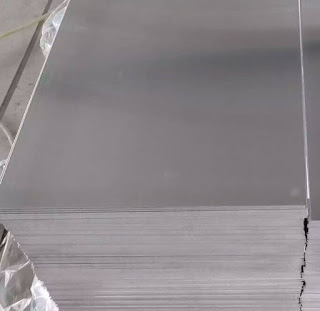"Steels:
Metallurgy and Applications" is a comprehensive textbook that covers the
metallurgy, properties, and applications of various types of steels. The third
edition of the book was published in 2020 and is authored by a team of experts
in the field of metallurgy and materials science.
The
book is divided into 15 chapters that cover the following topics:
1. Introduction
to Steels: This chapter provides an overview of the various types of steels and
their applications.
2. Iron
and Steelmaking: This chapter covers the processes involved in the production
of steel, including ironmaking, steelmaking, and casting.
3. Alloying
Elements in Steel: This chapter discusses the effects of alloying elements on
the properties of steel.
4. Steel
Microstructures: This chapter covers the microstructures of various types of
steels, including ferrite, pearlite, bainite, and martensite.
5. Heat
Treatment of Steels: This chapter covers the heat treatment processes used to
modify the properties of steel.
6. Mechanical
Testing of Steels: This chapter covers the various mechanical tests used to
evaluate the properties of steel, including tensile testing, hardness testing,
and impact testing.
7. Steel
Processing: This chapter covers the various processes used to shape and form
steel, including hot and cold rolling, forging, and extrusion.
8. Stainless
Steels: This chapter covers the properties and applications of stainless
steels, which are widely used in a variety of industries.
9. Tool
Steels: This chapter covers the properties and applications of tool steels,
which are used to make cutting tools and other applications.
10. High-Strength
Low-Alloy Steels: This chapter covers the properties and applications of
high-strength low-alloy (HSLA) steels, which are used in structural
applications.
11. Dual-Phase
Steels: This chapter covers the properties and applications of dual-phase
steels, which have a microstructure consisting of both ferrite and martensite.
12. Transformation-Induced
Plasticity Steels: This chapter covers the properties and applications of
transformation-induced plasticity (TRIP) steels, which exhibit high ductility
and formability.
13. Advanced
High-Strength Steels: This chapter covers the properties and applications of
advanced high-strength steels, which have been developed to meet the increasing
demands of the automotive industry.
14. Corrosion
and Corrosion Protection of Steels: This chapter covers the mechanisms of
corrosion and the methods used to protect steel from corrosion.
15. Applications
of Steels: This chapter covers the various applications of steel in industries
such as construction, automotive, aerospace, and energy.
"Steels: Metallurgy and Applications, Third Edition" is an excellent reference book on different types of steels and their applications. The author has updated the latest developments in steels in areas such as metallurgy, mechanical and physical properties, heat treatment techniques, manufacturing, and applications.
The book is very easy to read and reference, with specific illustrations and tables for different types of steels and their properties. It provides readers with a comprehensive overview of steels and their properties, enabling engineers and scientists to apply this knowledge in practical applications.
Although the book is very detailed and comprehensive, it may not be suitable for beginners in the field, as it requires some background knowledge of the metals industry and techniques. Overall, "Steels: Metallurgy and Applications, Third Edition" is an invaluable resource for professionals and students in the field of metallurgy, materials engineering, steel manufacturing, mechanical engineering, and related industries.





